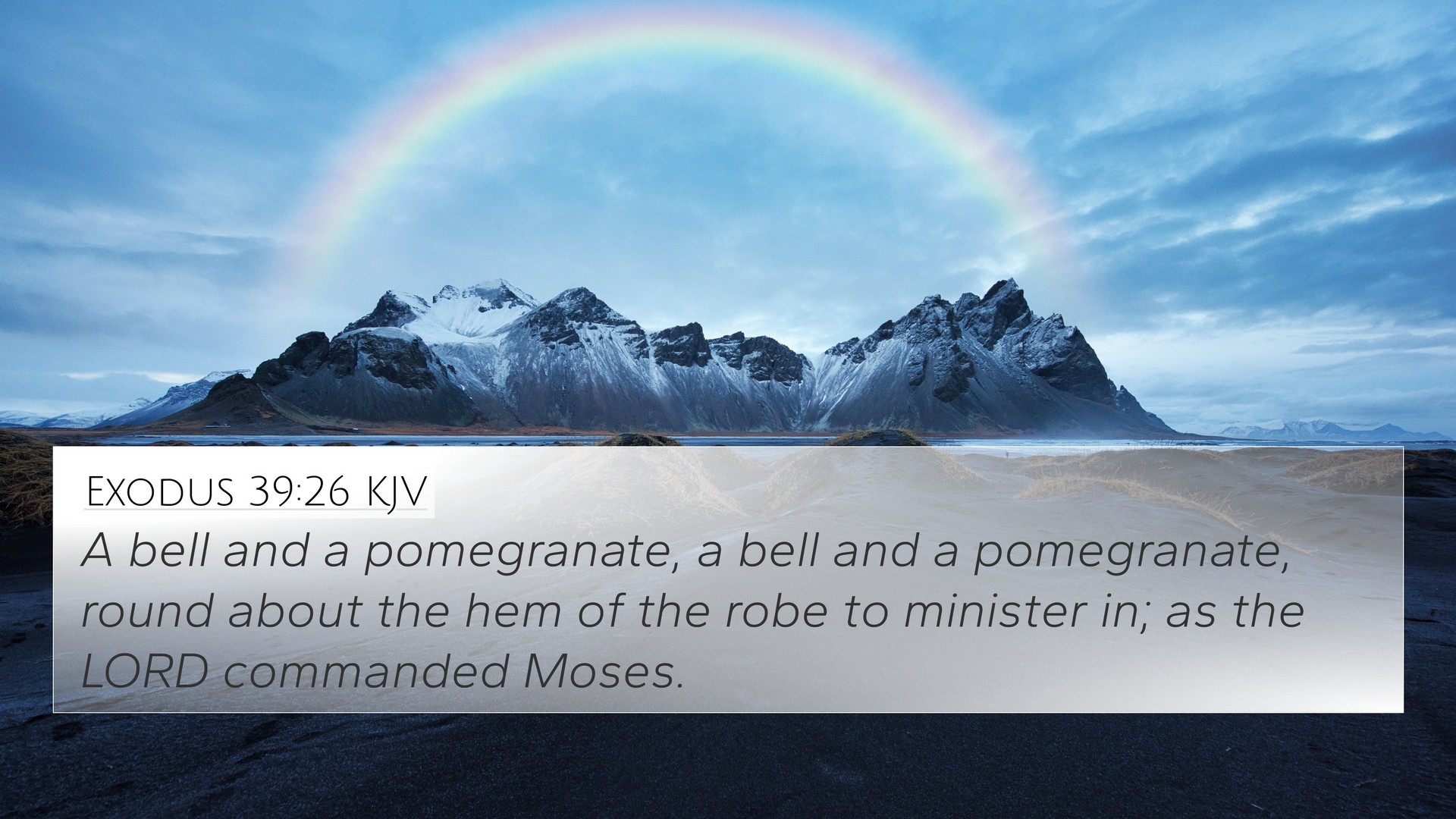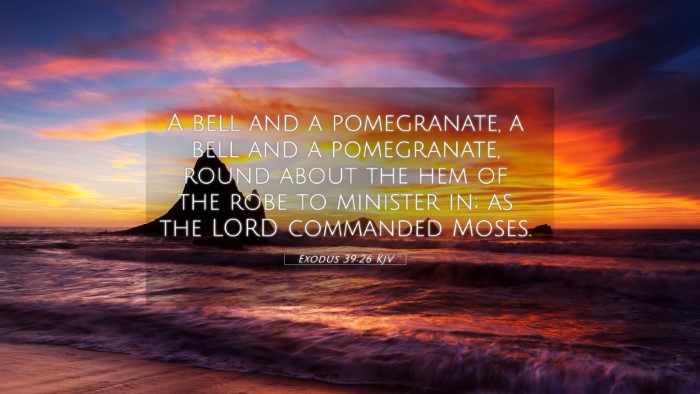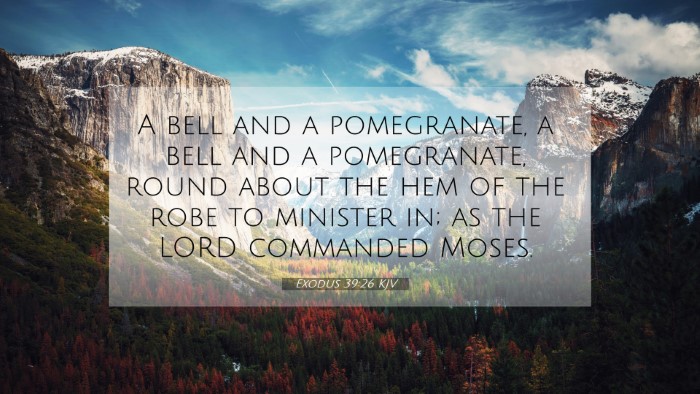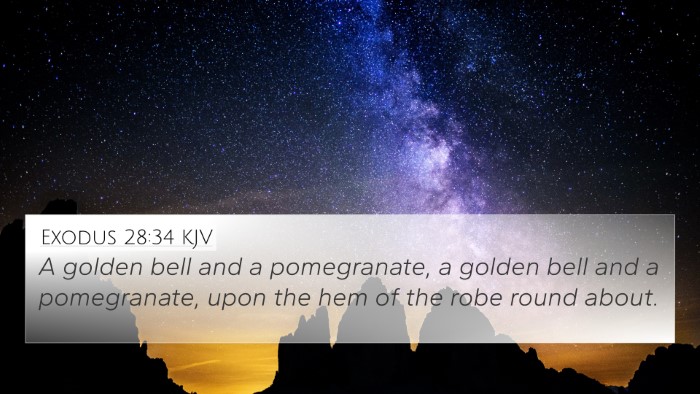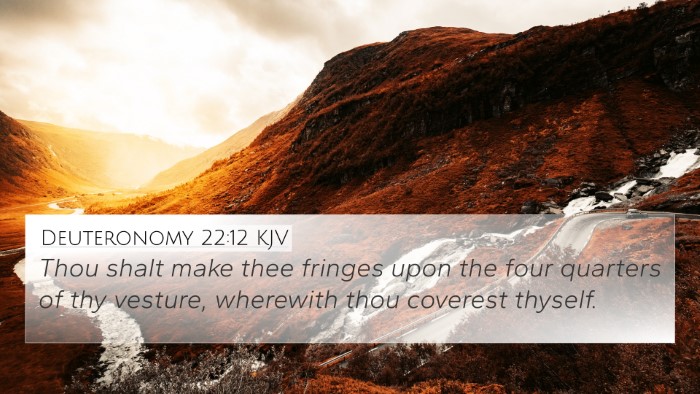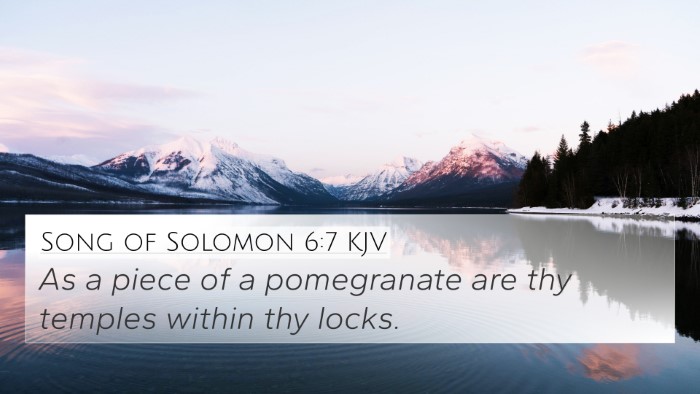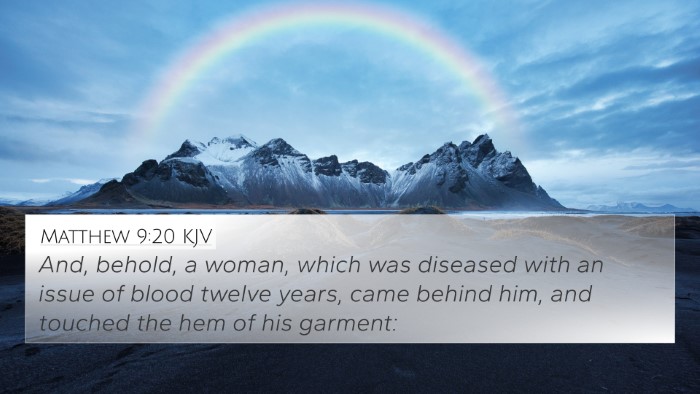Exodus 39:26 Explained
Verse: Exodus 39:26 states, "A golden bell and a pomegranate, a golden bell and a pomegranate, upon the hem of the robe round about." This description is part of the detailed account concerning the garments of the high priest, particularly the robe of the Ephod.
Meaning and Significance
The mention of the golden bells and pomegranates on the hem of the high priest's robe carries deep symbolic meaning. The combination of these elements is not arbitrary but serves a specific purpose in the context of worship and service before God.
- Golden Bells: Represented the sound of the priest’s ministry. As the high priest entered the Holy of Holies, the sound of the bells indicated his ongoing presence in the sacred space. This served as a reminder both to God and the people that atonement was continual.
- Pomegranates: Symbolized fruitfulness and life. They were common symbols in ancient Near Eastern cultures, and in this context, they signify the blessings that come from serving God. The pomegranates were a reminder of the covenantal promise of abundance and fertility for Israel.
Commentary Insights
Insights from various public domain commentaries help further illuminate the meaning of this verse:
- Matthew Henry: Henry emphasizes the importance of the priestly garments and their symbolism in relation to the holiness of the office. The bells signify alertness and vigilance in the priest’s duties, while the pomegranates indicate the fruit of righteousness that should stem from such service.
- Albert Barnes: Barnes points out that the dual nature of the bells and pomegranates suggests a balance between sound (representing action and ministry) and beauty (representing abundance and grace). Together, they reflect the holistic nature of worship—both vibrant and adorned.
- Adam Clarke: Clarke elaborates on the role of sound in worship. He notes that the bells rang when the high priest ministered, serving as a reminder to the congregation of the responsibility and reverence required during the sacrificial system. The pomegranates complement this with their visual statement of God’s blessings.
Bible Cross-References
Exodus 39:26 can be cross-referenced with several other scriptures that highlight similar themes:
- Leviticus 8:7-9: This passage discusses the garments of the high priest in detail, explaining their purpose in set apart ministry.
- Numbers 15:38-39: These verses remind the Israelites to wear fringes on their garments as symbols of their faith, which is a parallel in intention to the bells and pomegranates.
- Psalm 29:2: The call for worship and holiness echoes the significance of the high priest's garb.
- Revelation 1:6: This introduces believers as a royal priesthood, linking past and present priestly roles in God’s covenantal plan.
- Hebrews 5:1-4: Discusses the role of the high priest and the importance of their duties, reflecting on the idea of being set apart for divine service.
- 1 Peter 2:9: Affirms the New Testament priesthood of believers, calling them to holiness and service akin to that of the high priests in the Old Testament.
- James 3:12: The emphasis on good fruit ties back to the symbolism of the pomegranates as signs of righteous living.
Connections Between Bible Verses
Through comparative Bible verse analysis, we see how Exodus 39:26 not only holds importance in its immediate context but also engages in thematic connections with numerous other scriptures:
- Thematic Bible Verse Connections: The juxtaposition of sound and symbol in this verse invites further meditation on how worship, communication, and action intermingle in the life of faith.
- Bible Verses That Relate to Each Other: Connections can be made with verses that describe the beauty of worship, such as Psalm 96:9, which calls for worship in the beauty of holiness.
- Cross-Referencing Biblical Texts: Studying this verse alongside New Testament teachings on priesthood deepens our understanding of continuity in God’s revelation.
Tools for Bible Cross-Referencing
To uncover deeper insights like those in Exodus 39:26, one can utilize various tools for Bible cross-referencing:
- Bible Concordance: A comprehensive concordance is invaluable for tracking terms and themes across scriptures.
- Bible Cross-Reference Guide: Such guides assist in navigating scriptures and drawing connections across the text.
- Cross-Reference Bible Study: Engaging with a cross-referenced study Bible can illuminate intertextual dialogues between books.
Conclusion
Exodus 39:26 serves as a profound reminder of the sacredness of the priestly role and the elements encapsulated in that holiest of service. Through the symbolism of golden bells and pomegranates, we find a rich tapestry of meaning that encourages both reverence in worship and the pursuit of a life that bears spiritual fruit. By utilizing cross-referencing techniques and tools, one can further delve into the interwoven themes that exemplify God’s ongoing dialogue with His people across the scriptures.
